Why the Middle East’s Borders Guarantee Forever Wars — RealLifeLore
RealLifeLore Infographic Summary
The root causes of geopolitical turmoil in the modern Middle East, including the significance of the Suez Canal, colonial legacies, ethnic diversity, territorial disputes, oil discovery, international administration in Jerusalem, civil war, the Iranian Revolution, and US intervention in the Gulf War and its aftermath.
Table of Contents
- Root Causes of Geopolitical Turmoil in the Modern Middle East | 0:00:00-0:02:10
- The Geopolitical Significance of the Suez Canal | 0:02:10-0:04:30
- The Legacy of Colonial Promises, Ethnic Diversity, and Oil of Modern Iraq | 0:04:30-0:15:50
- International Administration in Control of Jerusalem | 0:15:50-0:19:30
- Civil War and Skirmishes (1962–1967) | 0:19:30-0:25:50
- Iranian Revolution and the Iran-Iraq War | 0:25:50-0:31:30
- United States intervention in the Gulf War and Aftermath | 0:31:30-0:34:10
https://youtu.be/JN4mnVLP0rU
Root Causes of Geopolitical Turmoil in the Modern Middle East | 0:00:00-0:02:10
In the 21st century alone, conflicts in the Middle East have claimed the lives of millions of people and forced millions more into exile and refugee status while costing costing trillions of dollars. This has made the Middle East arguably the most geopolitically turbulent region anywhere in the 21st century world. But why is this part of the world the way that it is? Why do you always hear about wars and conflicts taking place here, and why will you probably continue hearing about wars and conflicts taking place here for the rest of your life? Those questions are complex, because the modern Middle East is the most geopolitically complicated chessboard in the world to really understand, with dozens of different actors and competing interests all variously working against each other at some times and then working together at others.

In order to understand the root cause of the modern Middle East’s many problems, you only have to rewind the clock a little more than a hundred years ago to learn how the Middle East borders we know today came into being, and why they have guaranteed more than a century’s worth of forever wars and misery for the entire world ever since. For many centuries, the Turkish Ottoman Empire dominated practically the entirety of the Middle East, and enforced its own rule of law across the land, of ethnicities, languages, and religions all composed the extremely diverse peoples of the empire that at one point spanned from Hungary to Yemen.
The Ottoman Empire had regions within it, but it had no tolerance for nations, and nationalism within the empire of any kind was always ruthlessly repressed and crushed in the name of greater imperial stability and peace. Empire eventually entered into a long period of gradual decline, and by the 19th century, the rising British Empire was growing increasingly interested in the Middle East that the Ottomans had so thoroughly dominated for so long. The Middle East, you see, geographically stood in the way between the British home islands and the crown’s most important colony, India. In order to better safeguard British ships traveling between India and the home islands. The British began gradually acquiring protectorates across the Middle East, beginning with the modern United Arab Emirates in 1820, and then gradually expanding from there to include southern Yemen, Bahrain, and eventually Egypt itself in 1888. Nearly 20 years after the Suez Canal had first been completed, which granted the British the quickest possible journey time between the home islands in India by way across the Mediterranean and the Red Sea.

The Geopolitical Significance of the Suez Canal | 0:02:10-0:04:30
The Suez Canal was owned by British and French shareholders, despite running through Egypt, and was one of Britain’s most geopolitically valuable assets. The British intended to ensure their continuous access to it by forcing Egypt into the status of a protectorate. The British further established protectorates over Oman and Kuwait and then in 1915. In 1914, alarmed by the increasing British meddling in the Middle East and their internal affairs, the Ottoman Empire took the decision to join the First World War on the side of Imperial Germany. Shortly after that, the British and the French decided that the Ottoman Empire would have to be completely destroyed, but it was initially unclear what exactly would take the place of the Senate, a centuries old rule of the Ottomans.

In 1916, British and French diplomats named Mark Sykes and Francois-Georges Picot negotiated a secret treaty regarding how their respective governments would divide and partition the lands of the Ottoman Empire between themselves after the war’s conclusion and the ancient empire’s destruction. The agreement became simply known as the Sykes-Picot Agreement, agreement and basically went as follows: One zone would fall under direct colonial British rule this zone would in time become an independent Arab state under British influence. Another zone would fall under direct colonial French rule, and this zone would, in time, become another independent Arab state but under French influence. Another zone would be given to the Russian Empire.

Within the region of Palestine and Jerusalem, Jerusalem, with its immense religious significance, would be placed under some kind of as-of-yet unspecified international administration. These initial political lines that the British and French diplomats drew across the Middle East for the future of the region in 1916 paid little attention to the complex real borders of the Middle East’s various religious beliefs, languages, and ethnicities. But the lines were also not just arbitrarily drawn either. While not based on ethnicity, language, or religion, or really even geography in many cases, the lines were instead based upon the older Ottoman internal divisions that they had created, which also had little to no regard for ethnic or religious boundaries in their vast ethnically linguistic and religiously diverse empire where nationalism and separatism was never tolerated. The British zone initially encompassed the Ottoman’s provinces of Baghdad and Basra and parts of Deir ez-Zor in Damascus. While the French zone initially encompassed the Ottoman’s provinces of Mosul, Deir ez-Zor, Aleppo, Adana, Beirut and Lebanon. While the international Palestine area was based on the province of Jerusalem itself that reported directly to the Ottoman capital.

The Legacy of Colonial Promises, Ethnic Diversity, and Oil of Modern Iraq | 0:04:30-0:15:50
The 1916 Sykes-Picot Agreement, alongside other British wartime commitments, shaped the course of the Middle East. These included pledges of support for an Arab state and the endorsement of a Jewish national home in Palestine through the Balfour Declaration. The discovery of oil in the region during World War I highlighted its strategic importance. After World War I, America became a key supplier of oil to the British Empire, while President Woodrow Wilson opposed imperialism. Despite this, Britain sought control over the Middle East for its oil resources.
The Treaty of Sevres in 1920 further delineated borders in the region, transferring Mosul to British influence and imposing harsh terms on the Ottoman Empire. The Sykes-Picot Agreement persisted, establishing independent states like Armenia and Kurdistan, while also granting territories to Italy and Greece.
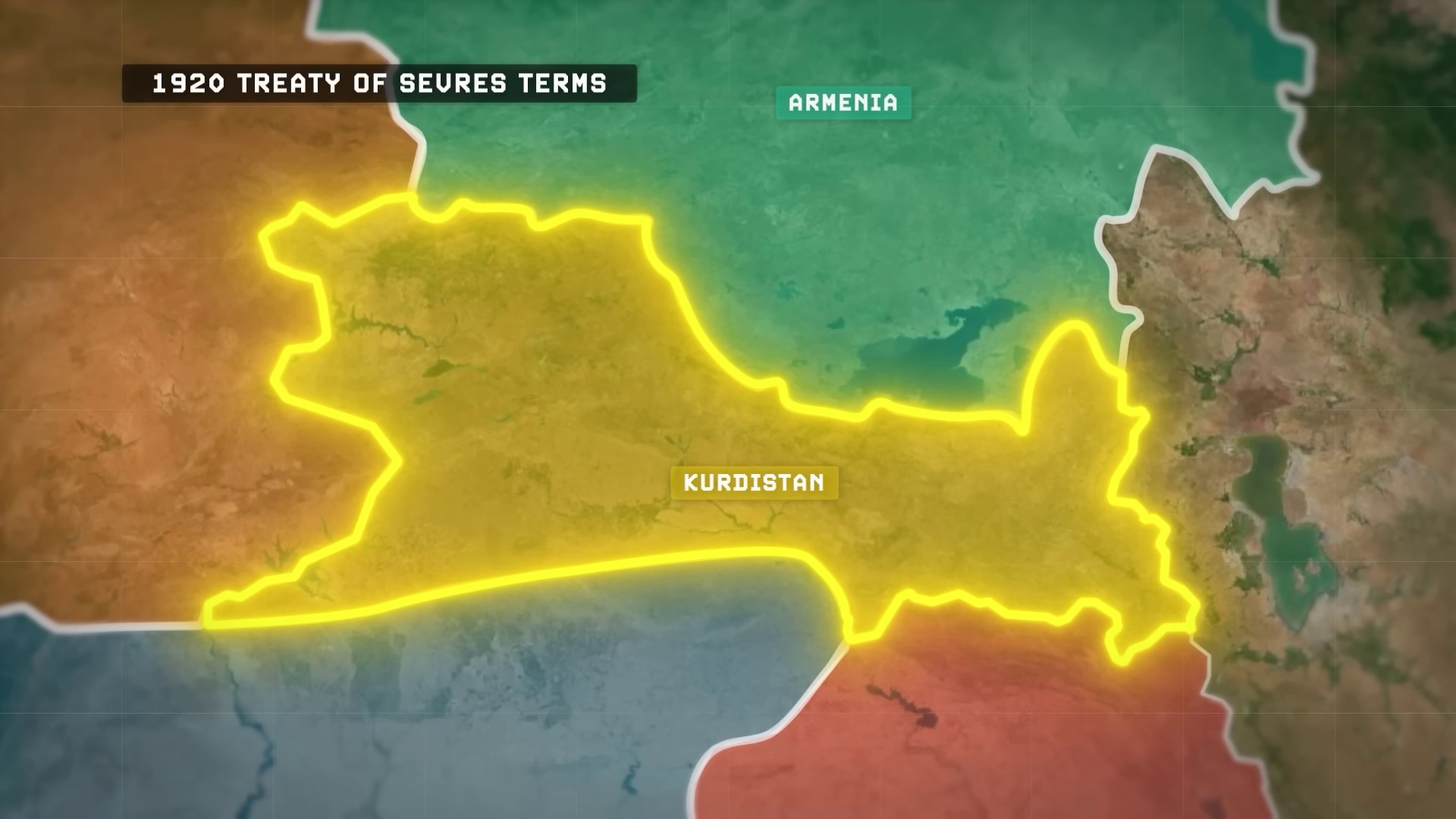

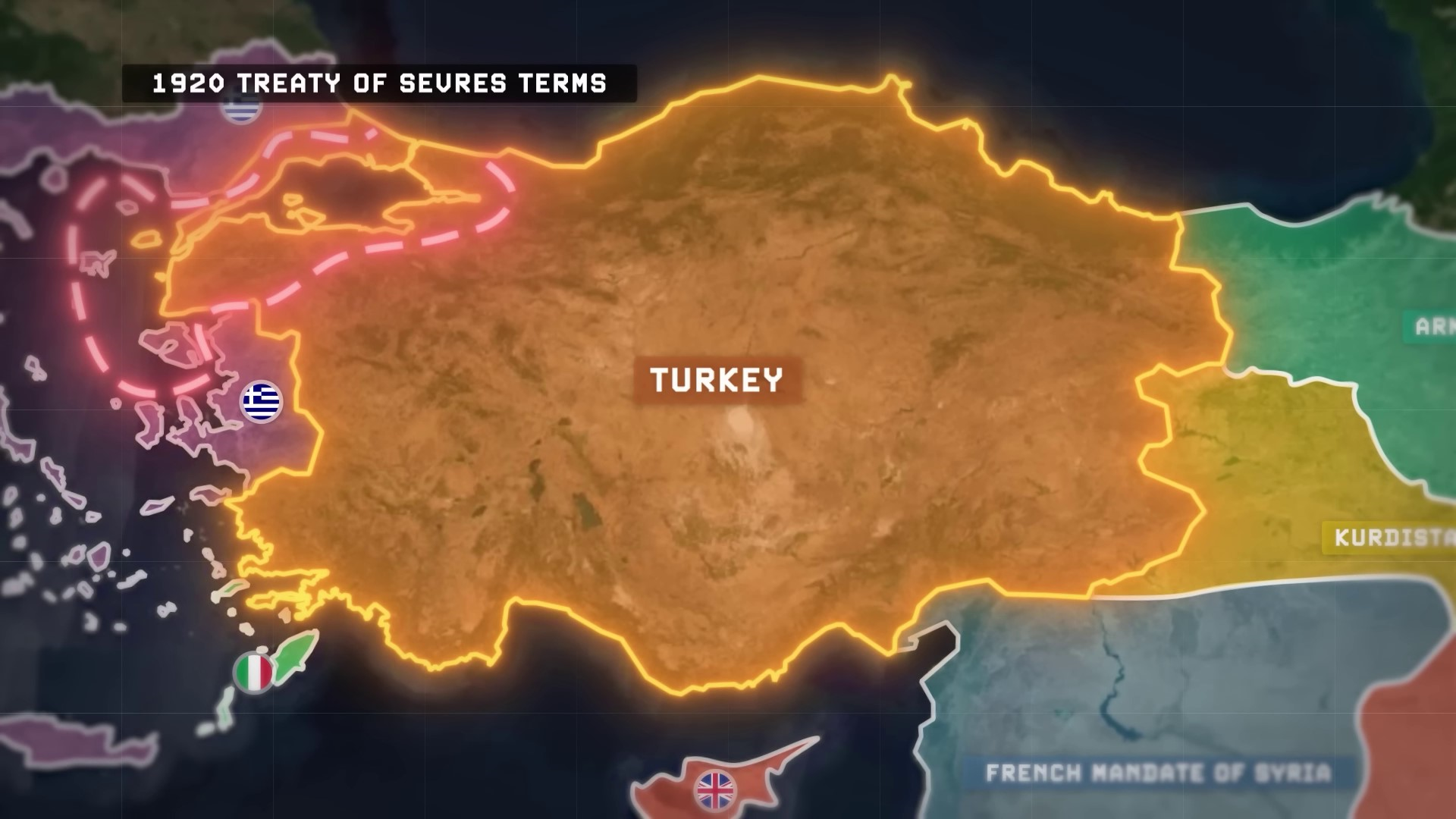
The Turkish Straits area was to be under an international regime, reducing Turkey’s jurisdiction. The remaining Turkish state was expected to be insignificant, leading to rebellion against the treaty terms by the emerging Turkish government, which fought against the Allies for two years. After the Turkish forces made significant military gains on the battlefield, they forced the Allies to return back to the negotiating table again and concluded with the terms of the 1923 Treaty of Lausanne, which replaced the terms of the previous Treaty of Sevres and were far more favorable to Turkey.
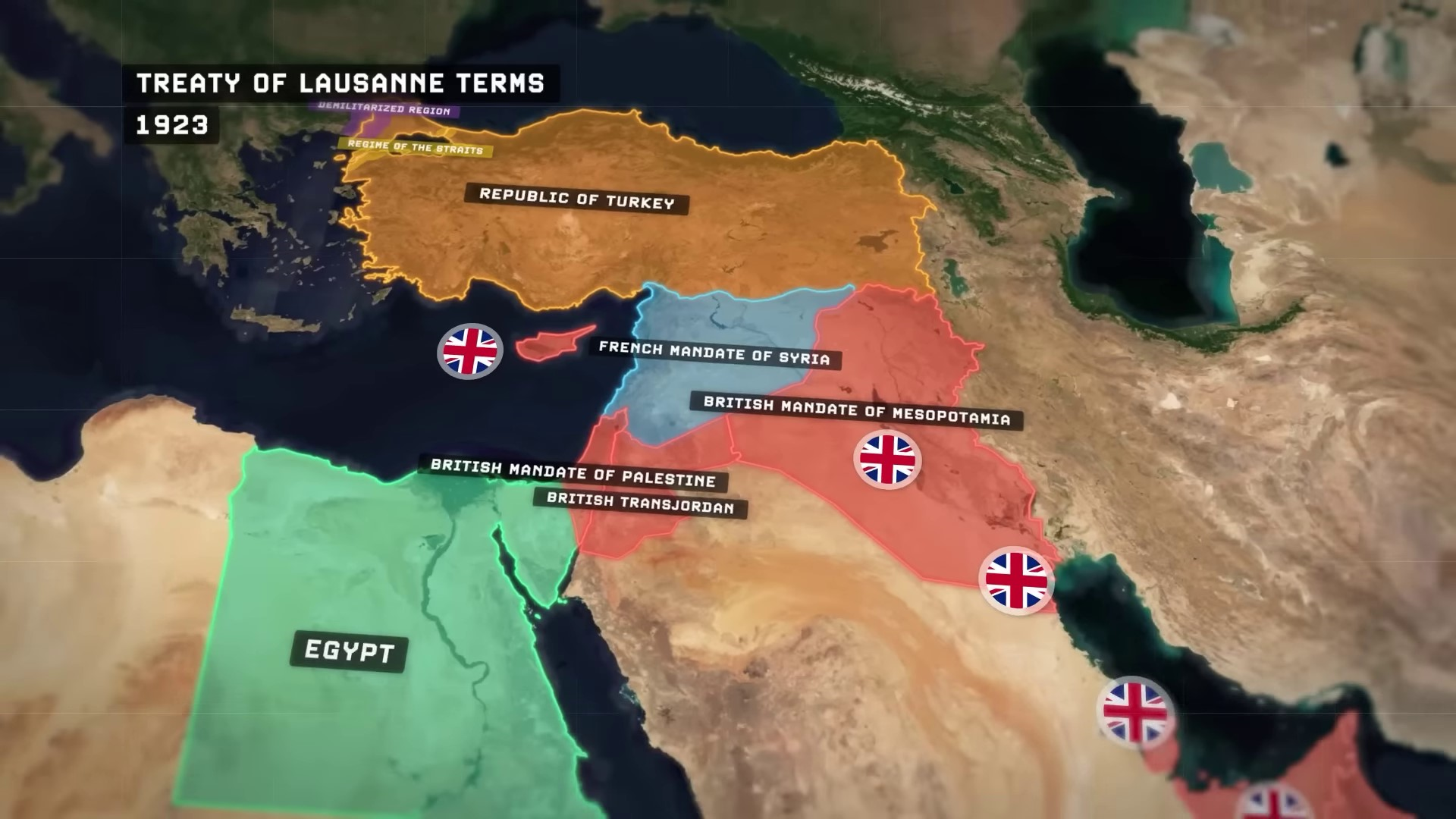
Finally, the borders of the modern Middle East as we roughly know them as today were set in ink, but the terms of Lausanne in 1923 still left many questions and problems unresolved. There would be no independent state created for the Kurdish people after all, for example, a problem that has vexed the region for the century ever since. Today, the Kurds are one of the largest stateless people in the world, numbering some 40 million strong with their own separate ethnic, cultural, and linguistic identity, but divided between the borders of what became Turkey, Syria, Iraq and Iran, where in all four countries they are minority groups and have often been subject to persecution and discrimination. Kurdish nationalism and separatism and the desire to create an independent Kurdish state out of these areas has been a constant flashpoint of conflict in this region ever since, together the former Ottoman provinces of Mosul, Baghdad and Basra were included in the mandate for Mesopotamia.
The Ottoman provinces later evolved into the state of Iraq had diverse populations with different ethnicities, interests, and beliefs. Mosul was mostly Kurdish, Baghdad was primarily Sunni Muslim Arabs, Basra was mostly Shia Muslim Arabs, and Kuwait was part of the Basra province under Ottoman rule.
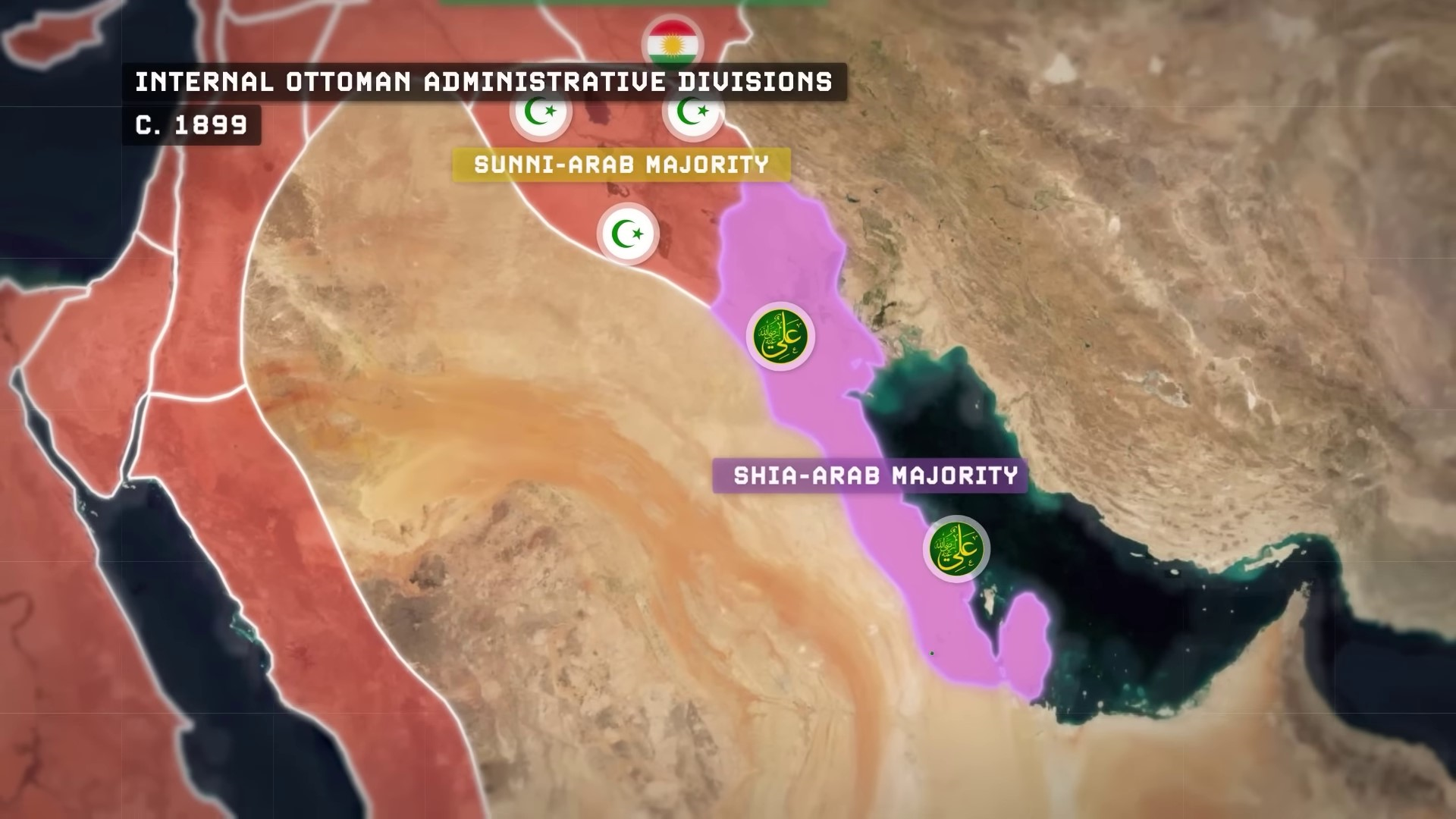
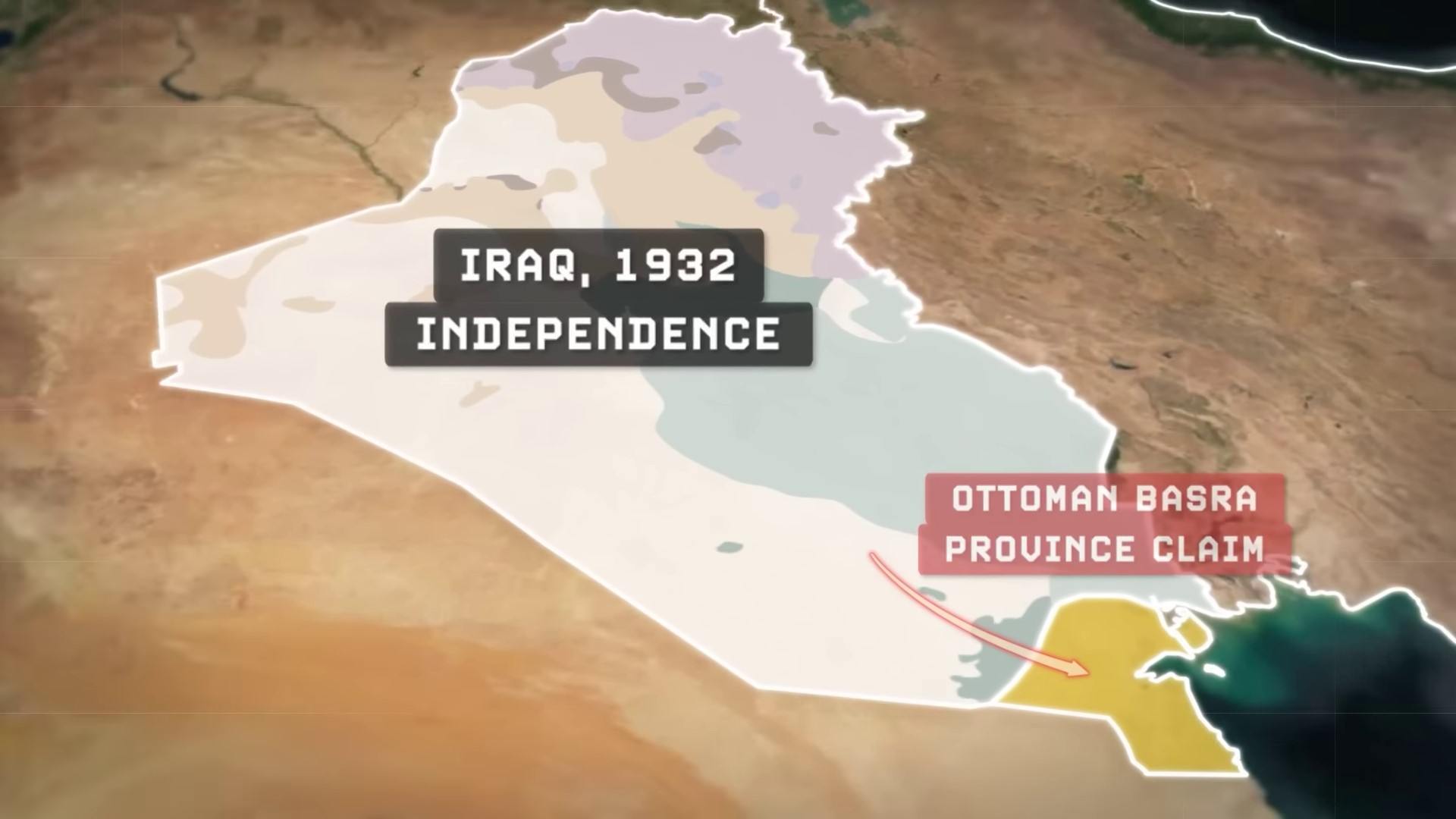
The British transformed Kuwait into their protectorate until the 1960s, giving Iraq a historical claim to Kuwait. Iraq, independent from British mandate in 1932, was internally fragmented and almost landlocked. French mandates created Lebanon as an independent state with diverse religious groups and combined Aleppo, Beirut, Damascus, and Deir ez-Zor to form Syria. Turkey pressured France to cede Alexandretta, leading to the creation of the independent state of Hatay which later joined Turkey in 1939.
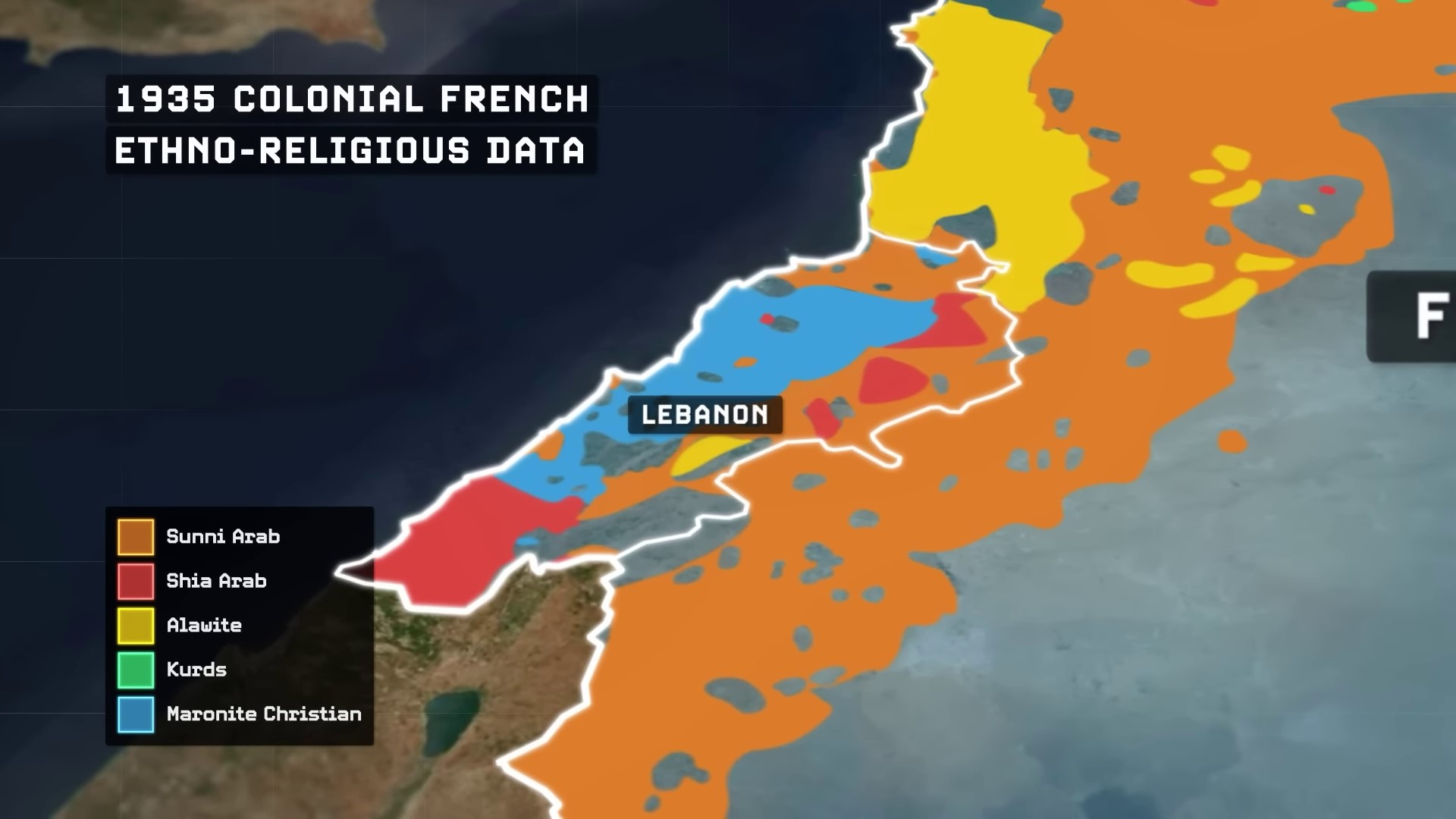
The government of what would later become Syria has continually claimed the Hatay province as rightfully Syrian territory under Turkish occupation. And even further, the headwaters for the Euphrates River that runs all across Syria begins up in Turkey as well, meaning that Turkish-built dams on the Euphrates and the Tigris present direct challenges to both Syria’s and Iraq’s supplies of water, leading to further sources of potential conflict between Iraq and Syria on one side and Turkey on the other. Lebanon became independent from the French mandate in 1943 and Syria in 1946. And Syria immediately emerged with territorial disputes with Turkey over Hatay and territorial claims to the whole of Lebanon based on the French decision to artificially separate it based on religious democracy. While being itself a deeply internally fragmented state along sectarian and ethnic lines just like Iraq and also Lebanon. Then all of these political divisions created by the Allies mapmaking between 1916 and 1923 were even further exacerbated by the future discoveries of oil and gas across all of these brand new countries.

Oil was first discovered in Iraq in 1927, followed by Kuwait and Saudi Arabia in 1938, and later in Syria and the United Arab Emirates. The locations of oil and gas reserves in these countries led to generations of conflict. In Iraq, oil was found in Basra and Mosul but not in Baghdad. Iran’s oil reserves were mainly in the Khuzestan province.

The Middle East is a region with significant oil reserves, with countries like Kuwait, Iraq, Saudi Arabia, and Syria having substantial oil resources. The distribution of oil across different ethnic and religious groups has influenced geopolitical dynamics in the region. The British, Soviets, and Americans have all sought to influence events in the Middle East due to its oil wealth. Additionally, the creation of a Jewish state in Palestine by the British following World War II led to the partition of Mandatory Palestine between a Jewish state and a Palestinian Arab state in 1947.
International Administration in Control of Jerusalem | 0:15:50-0:19:30
There was an international administration placed in control over the holy city of Jerusalem. The plan was accepted by most of the Jewish groups, but nearly universally rejected by most of the Arab groups, on the basis that the proposal was too unfair and tilted too much towards the Jewish side. Despite the Palestinian-era population at the time in Mandatory Palestine being more than twice as many as the Jewish population was, the 1947 UN partition plan called for giving the Jewish state 62% of the mandate’s land, while only 38% of the land would be allocated to the Arab state. Fighting between the Arabs and the Jews in Mandatory Palestine escalated and as the British withdrew in 1948, the State of Israel Israel declared its independence, thus starting the continuous Arab-Israeli conflict that has remained ever since. Not one Arab country in the world would recognize Israel’s existence as legitimate at first, and a coalition of mostly recently created or independent Arab states went to war with Israel in 1948 in support of the Palestinian Arab cause. Israel ended up emerging victorious in that war and ended up in control over all the lands that the UN had assigned to the Jewish state in the 1947 partition plan.


The aftermath of the 1948 Arab-Israeli War led to the division of Arab states’ land and the occupation of Palestinian territories by Jordan and Egypt. The displacement of Palestinian Arabs, known as the Nakba, resulted in demographic shifts in neighboring countries like Lebanon. The defeat of the Arabs by Israel in 1948 paved the way for leaders like Gamal Abdel Nasser in Egypt, who aimed to unify Arab lands and challenge Western influence. Nasser’s nationalization of the Suez Canal in 1956 sparked conflict with Britain, France, and Israel, leading to his rise as a champion of Arab nationalism. The formation of the United Arab Republic with Syria in 1958 was short-lived, ending in 1961 with Syria regaining independence.
Civil War and Skirmishes (1962–1967) | 0:19:30-0:25:50
The Civil War in North Yemen in 1962 was a conflict between the monarchist government and Nasserist Arab nationalist Republican rebels. It was the first proxy conflict in the modern Middle East. Monarchist Middle Eastern states like Saudi Arabia, Kuwait, Jordan, and Imperial Iran intervened militarily to support the Yemeni monarchist regime, fearing the spread of revolution to their own monarchies. Nasser supported the nationalist rebels by sending Egyptian troops and weapons to promote Arab nationalism and unity.
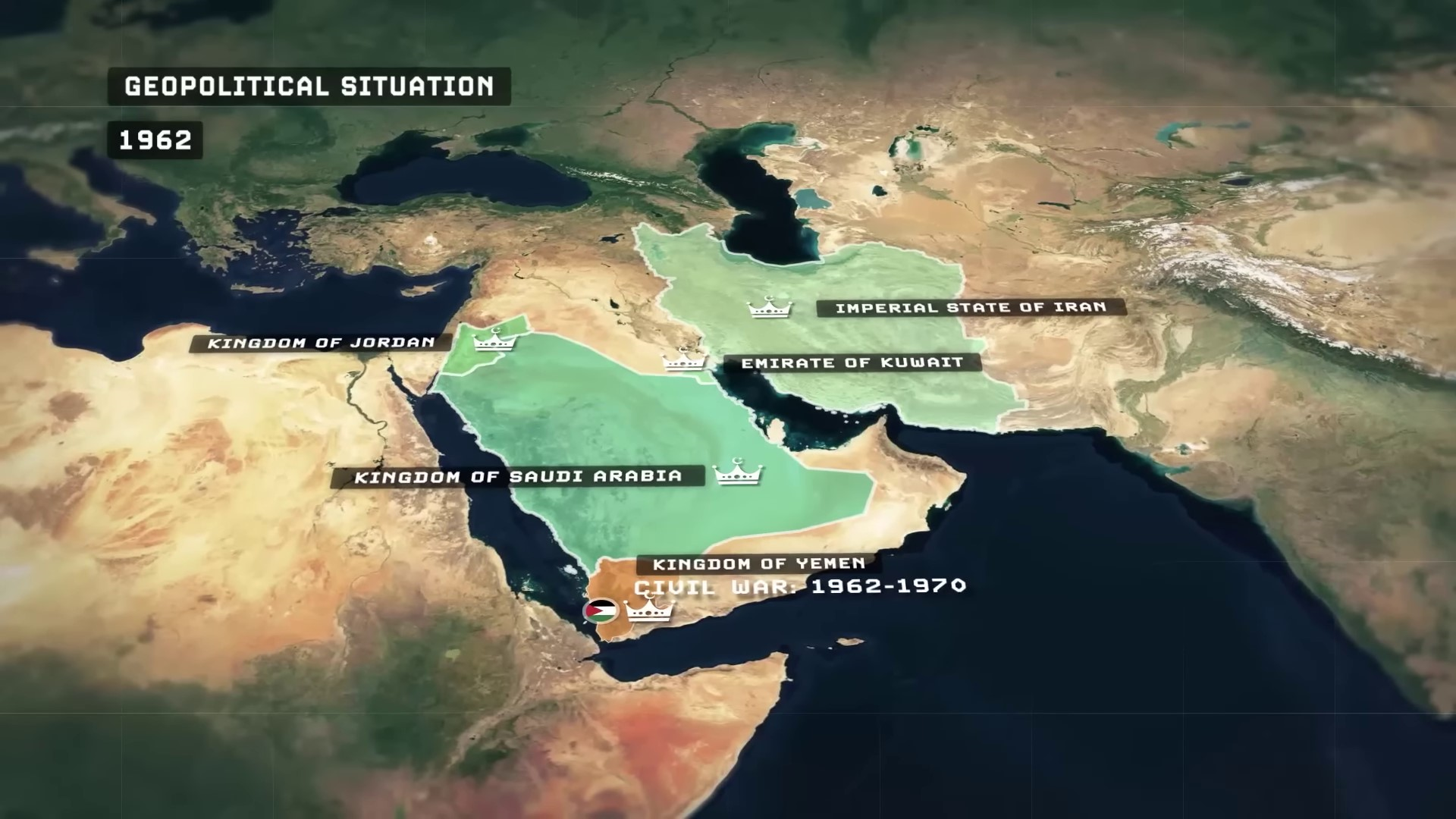
The Six Day War in 1967 saw Israel launching surprise airstrikes against Egypt, Jordan, and Syria, leading to rapid Israeli military gains and occupation of territories. The war resulted in Israel occupying the Golan Heights, West Bank, East Jerusalem, Gaza Strip, and Sinai Peninsula. The closure of the Suez Canal by Egypt followed, leading to conflicts between Israel and Arab/Islamic worlds. Nasser’s defeat in the war and subsequent death marked a shift in regional power dynamics, with the British Empire relinquishing control in the Middle East. The United States began increasing its involvement in the region, supporting Imperial Iran as a security guarantor. However, conflicts continued, with Egypt and Syria attempting to reclaim lost territories from Israel but facing defeat.
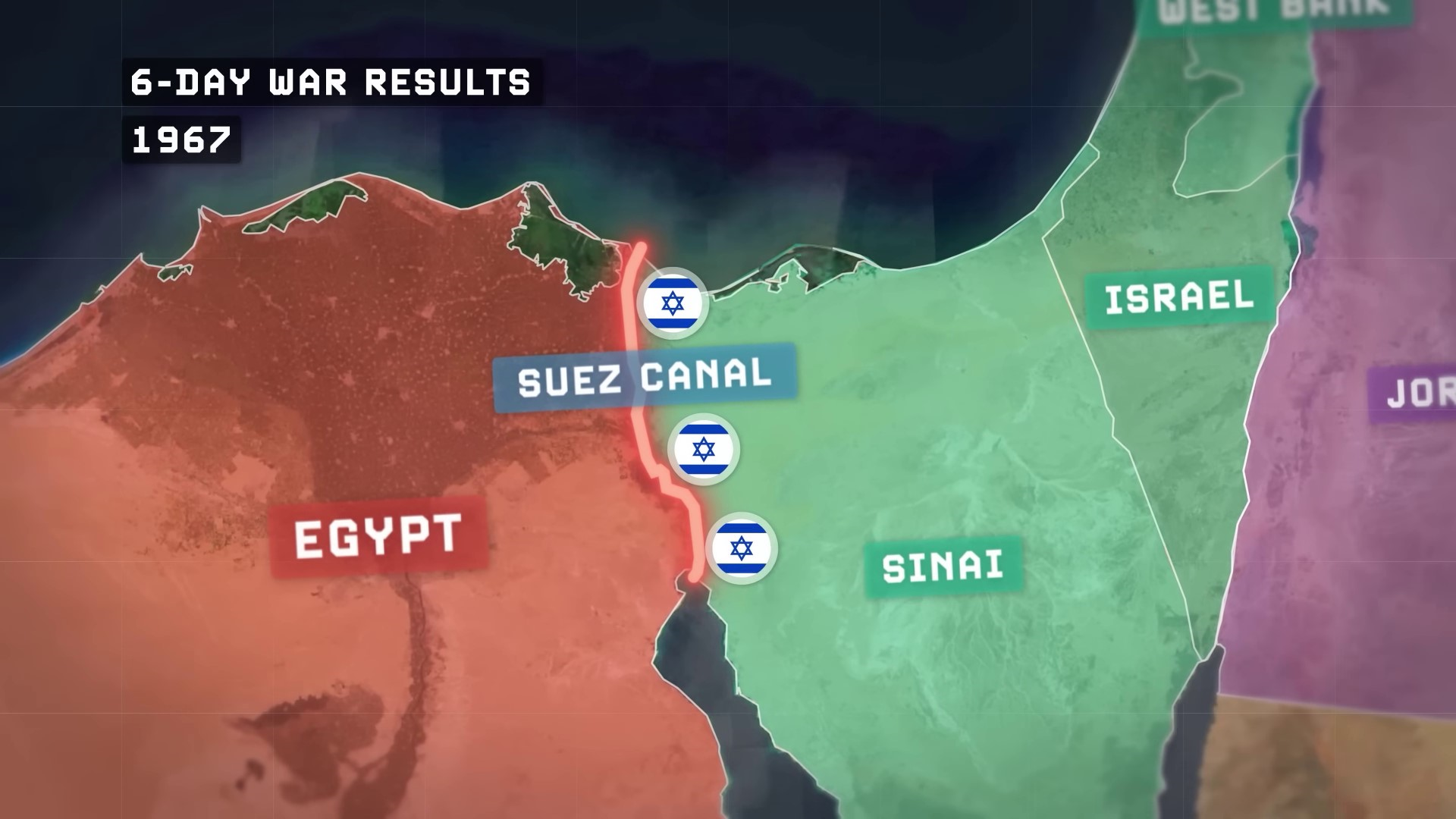
The 1973 Yom Kippur War led to peace between Egypt and Israel in 1979 through the Camp David Accords. Egypt recognized Israel’s statehood, becoming the first Arab country to do so. This peace was opposed by other Arab states, leading to Egypt’s expulsion from the Arab League. The assassination of Sadat and Syria’s support for the Palestinian cause escalated tensions. In Lebanon, a civil war broke out in 1975, involving Israel, Syria, and various factions. The conflict lasted until 1990, with Israeli and Syrian occupations ending in 2000 and 2005 respectively. Israel’s annexation of East Jerusalem and the Golan Heights further fueled disputes with Syria. Meanwhile, the 1979 Iranian Revolution established a theocratic regime, reshaping the Middle East as the first Islamist government emerged in the region.
Iranian Revolution and the Iran-Iraq War | 0:25:50-0:31:30
The new Iranian regime’s Shia Islamist ideology aims to establish a grand Islamic civilization under the rule of the Islamic clergy and their supreme leader. They seek to export their Islamic revolution to Shia Muslim majority lands in the Middle East and beyond. Monarchies in the Islamic world, such as Saudi Arabia and the Gulf states, are viewed differently by the Iranian regime.

The Iranian revolution led to Iran becoming a bitter enemy of Israel, Saudi Arabia, and other Arab monarchies, as well as the United States. Saddam Hussein, fearing the spread of the Shia revolution into Iraq, invaded Iran in 1980, sparking the Iran-Iraq war. The war lasted eight years, resulting in massive casualties. Kuwait and Saudi Arabia supported Iraq financially to prevent Iran’s expansion. The conflict also fueled the Saudi-Iranian Cold War, with Saudi Arabia fearing Iran’s influence in the region.
After it was granted independence a century later in 1971, the imperial state of Iran claimed the island as rightfully belonging to them instead. After the 1979 Islamic Revolution, the new theocratic revolutionary Iran continued the claim that Bahrain was a lost Iranian province and that it should be returned to them, further amplified by the fact that the vast majority of Bahrain’s citizens were and are Shia Muslims, but ruled by a Sunni Muslim monarchy, friendly to the fellow Sunni monarchies in Saudi Arabia, Qatar, Kuwait, and the United Arab Emirates. Bahrain is these days directly connected to Saudi Arabia by an 18-mile-long bridge. The island is only located about 60 kilometers away from Saudi Arabia’s largest single oil field, the Ghawar oil field.

The Ghawar oil field is located near Saudi Aramco’s headquarters and Ras Tanura, Saudi Arabia’s largest oil export terminal. Bahrain’s proximity to Shia-majority areas in eastern Saudi Arabia raises concerns about Iranian influence. Saudi Arabia supported Saddam Hussein to contain the Iranian revolution. Saddam’s invasion of Kuwait in 1990 threatened Saudi Arabia’s oil fields and global oil supply. His ambition was to unify the Arab world and challenge the Sykes-Picot agreement.
United States intervention in the Gulf War and Aftermath | 0:31:30-0:34:10
The United States gathered together a massive military coalition of 32 nations and militarily intervened against Saddam Hussein during the Gulf War of 1990 to 1990. 1991, which rapidly ejected the Iraqi military from Kuwait and liberated the nation once again. The map of Sykes and Pico was once again restored. Afterwards, the United States began fully stepping into the role as the new primary security guarantor of the Persian Gulf and its oil supplies, in order to make sure that the source of half of the world’s oil would remain stable and accessible. The United States’ 5th Fleet was reactivated and headquartered in Bahrain, providing the US with a big incentive alongside the Saudis to keep the island out of the hands of revolutionary Iranian influence, while the United States Air Force set up a massive new airbase at Al Udeid in Qatar.

After that, Jordan became the second Arab state in the world to make peace with Israel, when they recognized the Jewish state in 1994. But the increasing setbacks for secular Arab nationalism in the Middle East and the growing presence and legitimacy of the United States and Israel in the region gave rise to a new brand of Sunni Islamism in the Arab world that rivaled both the more Shia Islamism in Iran and the secular Arab nationalist movements like Ba’athism in Iraq and Syria and the previous Nasserism in Egypt.

This set the stage for new organizations like Al-Qaeda to emerge, who wanted to ignite a worldwide Islamist revolution to unite the entire Muslim world beneath a new Islamic state that would fully encompass all of the Muslim lands, and finally do away with the borders and terms of Sykes and Picot once and for all. This newest challenge to the map of the Middle East set by Sykes and Picot would eventually evolve even further into the form of ISIS, an even more radical Sunni Islamist organization with in Al-Qaeda that for a time in 2014 and 2015 exploded onto the world stage with a series of conquests across the border between Iraq and Syria. A border that had been set by Sykes and Picot a century before their time in 1916, and a border which they were adamant they were going to finally be the ones to destroy, just like many others before them and probably like many more in the future.
